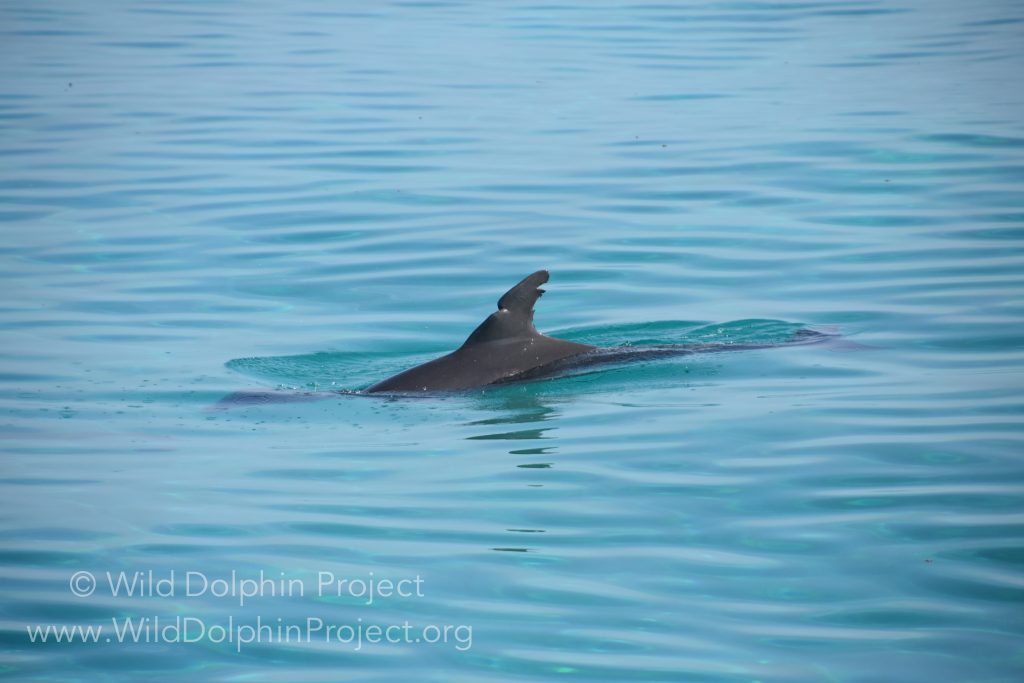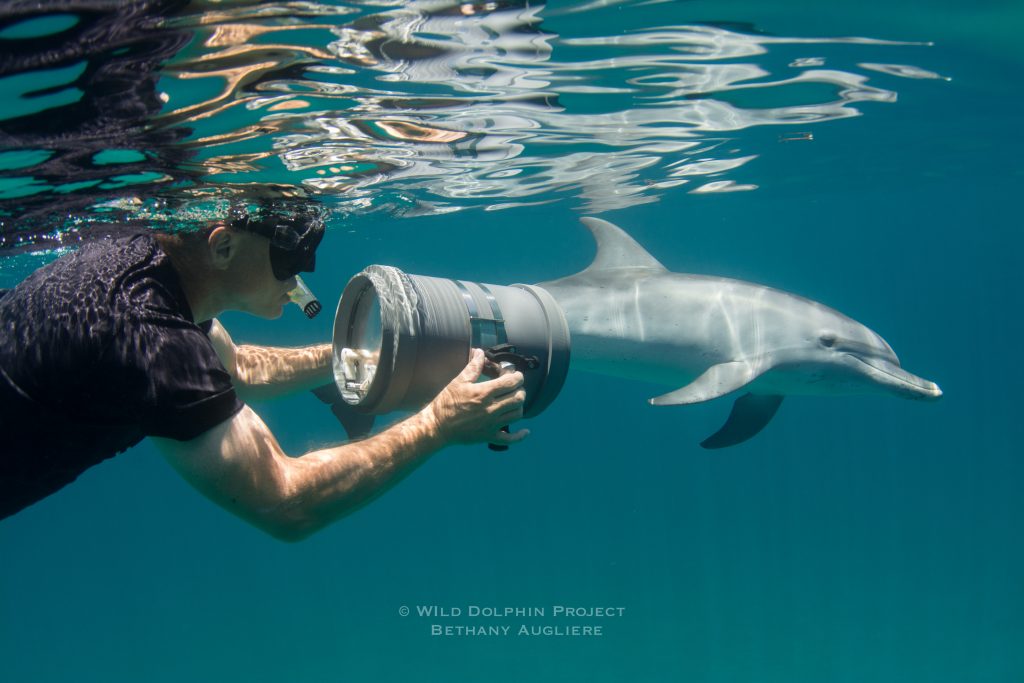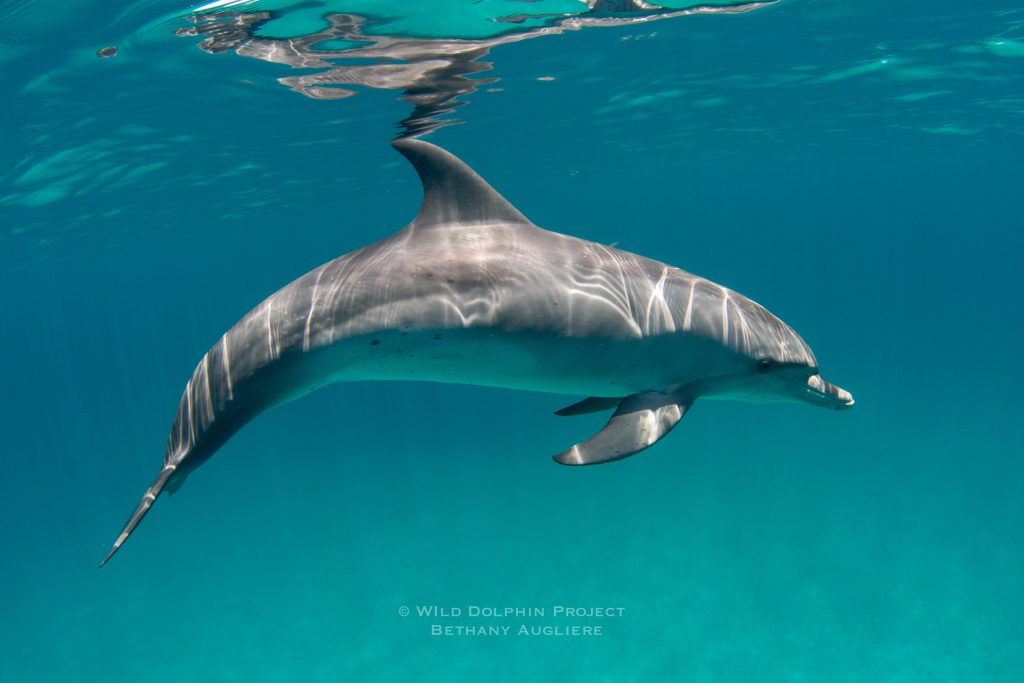By Liah McPherson
We began Trip 5 of our field season on the Little Bahama Bank, off Grand Bahama Island, retrieving the acoustic receivers that were deployed on Trip 3 and looking for the elusive spotted dolphins in that region. (To learn more about these receivers check out Dr. Herzing’s blog here). While we didn’t locate them, we were able to get in the water with some bottlenose dolphins. The bottlenose dolphins in the areas we survey are less sociable than spotted dolphins, and we have fewer opportunities to collect underwater data. For this reason, these encounters can be very valuable for gathering information that we can’t get from surface photographs, including the dolphins’ sex and body markings.

A bottlenose dolphin we call Jagger surfaces by the boat. While Jagger’s fin is very distinct. Many bottlenose dolphins have “clean” dorsal fins, and we can only identify them by other markings more easily seen underwater.
Dr. Matthias Hoffman-Kuhnt, long time colleague of the Wild Dolphin Project, joined us on this trip to collect data with his Acoustic Source Point Overlay Device (ASPOD). It’s difficult to determine which dolphins are vocalizing underwater during an encounter due to the fact that sound travels more than 4 times faster underwater than in air. ASPOD solves that problem by using three underwater microphones, called hydrophones, to record sounds and triangulate where they are coming from. That way he can pinpoint specific dolphins making the sounds. Later, the software he is developing also differentiates between different types of dolphin vocalizations, such as echolocation, squawks and whistles. On Trip 5, Dr. Hoffman-Kuhnt was focusing on recording dolphin whistles so that his software can become better at recognizing them. He already had a lot of echolocation data from previous field seasons.

Dr. Matthias Hoffman-Kuhnt swims alongside a group of spotted dolphins, collecting data with ASPOD. Photo by Bethany Augliere.
Down in Bimini, our second and more southern field site, we had multiple good encounters with spotted dolphins, some of whom were quite curious and playful. During one encounter, two young female dolphins named Littleprawn and Nereide took break from traveling to dive underwater with us and engage in a game of seagrass keep-away! We’ve observed lots of dolphin behavior like play, courtship and aggression this season, and increased interaction between the local Bimini dolphins and the Grand Bahama Island group that migrated to the area in 2013. There were still, however, a few encounters this trip in which the dolphins were really traveling— slowly enough for us to record them, but fast enough to completely wear us out!
With interesting dolphin encounters, mostly calm weather, and a hilarious mix of people on board, Trip 5 was one for the books!

